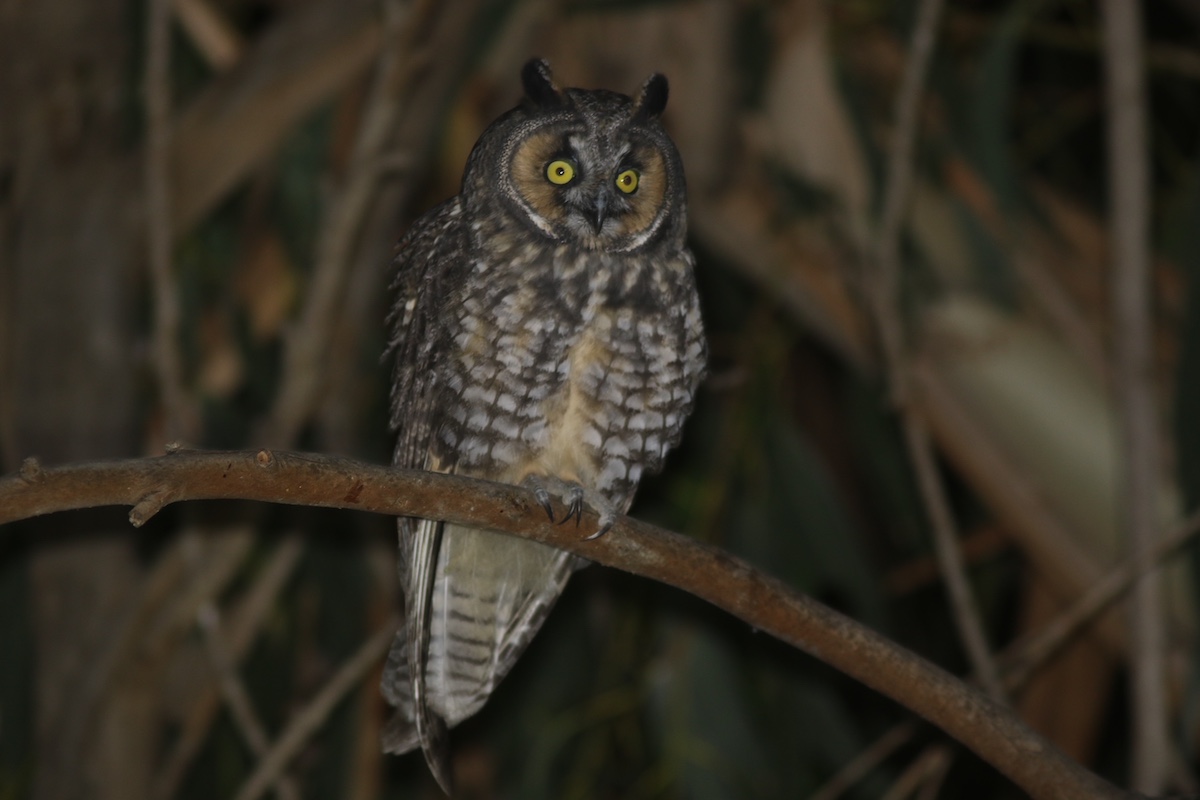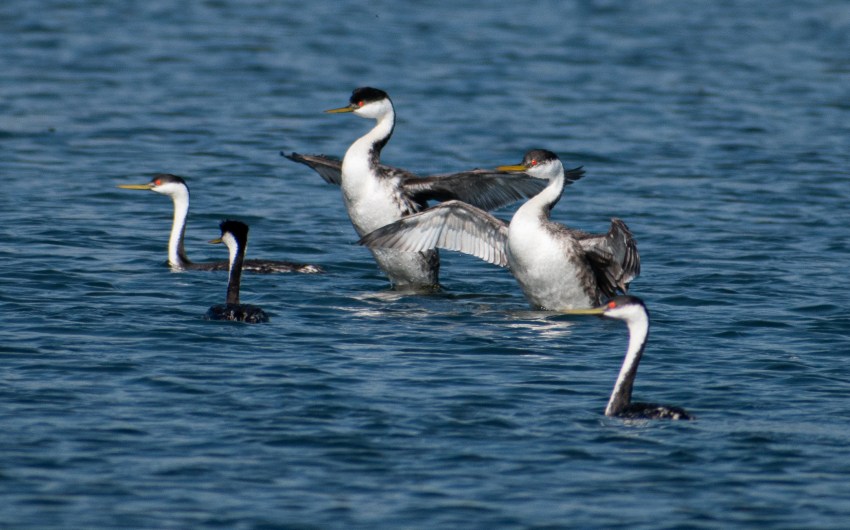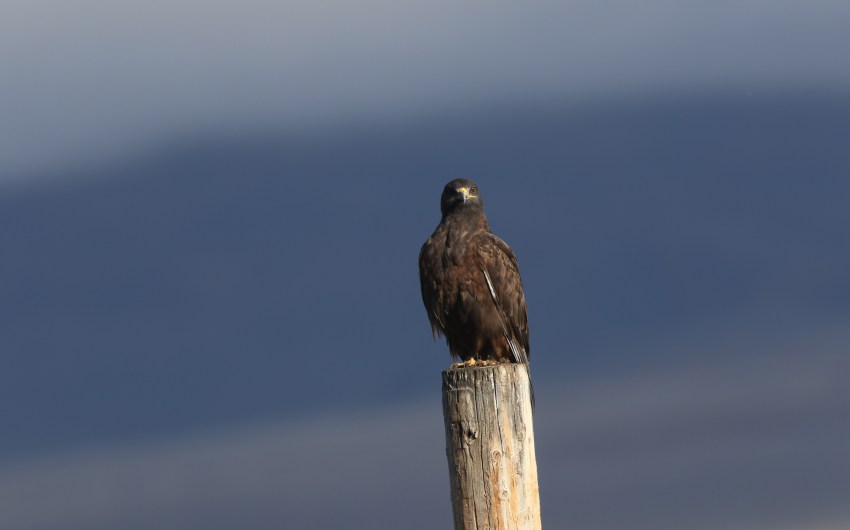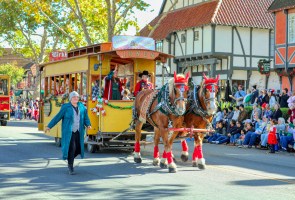The incessant, catlike calls began at 8 p.m. and finished at 5 a.m.: Long-eared owlets (Asio otus) were meowing in Scorpion Canyon, on the southeast fringe of Santa Cruz Island.
Over the years, the Channel Islands National Park has proven to be a haven for weary, migrating birds. Each fall and spring, avian species bounding north and south sometimes need that windswept, volcanic refuge to recharge their batteries before continuing their annual sojourns.

Then, there are feathered genus that reach the Northern Chain and decide to set up shop for the long haul. It seems like each year delivers a species of surprise, birds that capture the fascination. It creates a buzz for birdwatchers searching craggy canyons like the lichen-covered ravine that weaves its way from Scorpion Anchorage, the main hub of the National Park.
In the spring of 2023 and 2024, it’s been long-eared owls. Weighing nine ounces and standing 15 inches tall, these slender owls are prevalent across Europe and North America. However, they are rare at the National Park. And according to Paul Collins, former curator of vertebrate zoology at the Santa Barbara Museum of Natural History, long-eared owls might be colonizing the craggy canyon.
“Yes, it is possible that the same family that nested in Scorpion Canyon in 2023 is likely to be the pair that has nested at this locale in 2024,” said Collins, who retired in 2002.
According to his upcoming book about birds on California’s Channel Islands, long-eared owls are very rare and transient winter visitors, except now it appears as if they are colonizing within Scorpion Canyon. In fact, this is the first documented breeding record on Santa Cruz Island, and only the second confirmed nest across all eight California Channel Islands.

Slender Stealth
I read that long-eared owls enjoyed roosting on the edge of open space, keeping tabs on their favorite food, rodents. On Santa Cruz Island, the endemic deer mice are abundant, easy prey for a well-camouflaged and stealthy predator. Relying on their hearing more than anything else when hunting, long-eared owls can catch their prey in total darkness. With a three-foot-wide wingspan, they are nimble flyers, and it was evident even under the stars.
Literally taking a stab in the dark, I positioned myself 25 feet aboveground on a tiny ledge, hoping for the best. I had a great view of several unobstructed limbs where hopefully they would roost. I sat and moved around on a rocky slab for four hours (from 8 p.m. to midnight). The ledge was surrounded in minty-colored lichen and creamy yellow island paintbrush.
From my vantage point, I was looking into the massive girth of a eucalyptus tree with clear views of potential perch sites. There, I sat and waited patiently until I heard their catlike sounds. Suddenly, several owls were flying in short, arcing flight patterns, and just as if I planned it, two long-eared owls landed 30 feet away from where I was perched.
Their long ear tufts atop their heads stood tall and curled in the low light of my headlamp. Those tufts are not their ears but are specialized feathers that stand up when they become alarmed and need to conceal themselves. As they perched, their camouflage was apparent in the trees. If I hadn’t heard them, I wouldn’t have seen them.
Premier Events
Sat, Dec 20
10:00 AM
Santa Barbara
Mosaic Holiday Markets
Sun, Dec 21
10:00 AM
Santa Barbara
Mosaic Holiday Markets
Wed, Dec 31
9:00 PM
Santa barbara
NEW YEAR’S Wildcat Lounge
Sat, Dec 20
10:00 AM
Santa Barbara
Mosaic Holiday Markets
Sat, Dec 20
2:30 PM
Santa Barbara
Santa Barbara Revels Presents “The Celestial Fools”
Sat, Dec 20
7:30 PM
Santa Barbara
State Street Ballet – “The Nutcracker “
Sun, Dec 21
2:00 PM
Santa Barbara
Ensemble Theatre Company Presents “The Complete Works of Jane Austen, Abridged”
Fri, Dec 26
7:00 AM
Solvang
Solvang Julefest
Sat, Dec 27
7:00 PM
Santa Barbara
Schnack ‘n Bari Jazz Trio at Roy
Wed, Dec 31
6:15 PM
Santa Barbara
NYE 2026 with SB Comedy Hideaway!
Wed, Dec 31
9:00 PM
Santa barbara
NEW YEAR’S Wildcat Lounge
Wed, Dec 31
10:00 PM
Santa Barbara
In Session Between Us: Vol. I NYE x Alcazar
Wed, Dec 31
10:00 PM
Santa Barbara
NYE: Disco Cowgirls & Midnight Cowboys
Sat, Dec 20 10:00 AM
Santa Barbara
Mosaic Holiday Markets
Sun, Dec 21 10:00 AM
Santa Barbara
Mosaic Holiday Markets
Wed, Dec 31 9:00 PM
Santa barbara
NEW YEAR’S Wildcat Lounge
Sat, Dec 20 10:00 AM
Santa Barbara
Mosaic Holiday Markets
Sat, Dec 20 2:30 PM
Santa Barbara
Santa Barbara Revels Presents “The Celestial Fools”
Sat, Dec 20 7:30 PM
Santa Barbara
State Street Ballet – “The Nutcracker “
Sun, Dec 21 2:00 PM
Santa Barbara
Ensemble Theatre Company Presents “The Complete Works of Jane Austen, Abridged”
Fri, Dec 26 7:00 AM
Solvang
Solvang Julefest
Sat, Dec 27 7:00 PM
Santa Barbara
Schnack ‘n Bari Jazz Trio at Roy
Wed, Dec 31 6:15 PM
Santa Barbara
NYE 2026 with SB Comedy Hideaway!
Wed, Dec 31 9:00 PM
Santa barbara
NEW YEAR’S Wildcat Lounge
Wed, Dec 31 10:00 PM
Santa Barbara
In Session Between Us: Vol. I NYE x Alcazar
Wed, Dec 31 10:00 PM
Santa Barbara
























You must be logged in to post a comment.